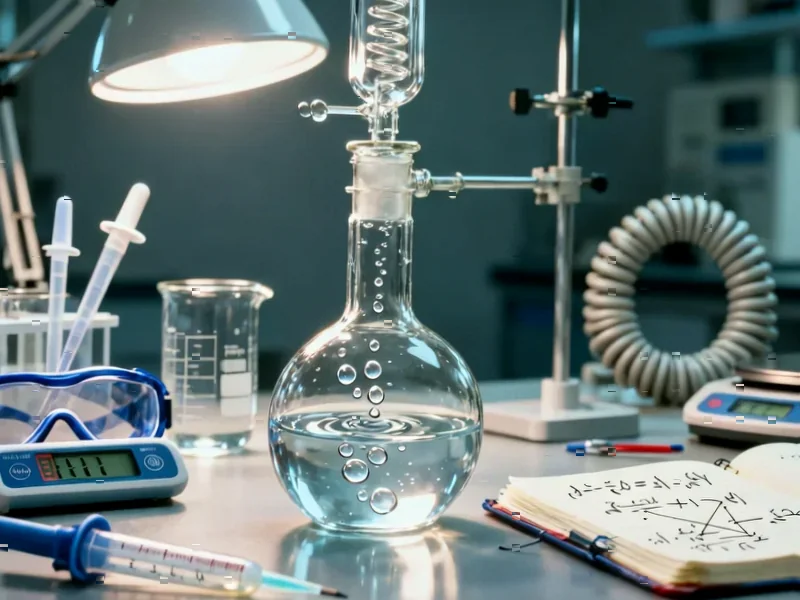According to Phys.org, researchers at the Max Planck Institute for Terrestrial Microbiology in Marburg, led by Johannes Rebelein, have successfully purified and determined the structure of the methylthio-alkane reductase enzyme from Rhodospirillum rubrum bacteria. The breakthrough, achieved in collaboration with RPTU Kaiserslautern, revealed that this enzyme uses large, complex iron-sulfur clusters previously known only in nitrogenases—some of Earth’s oldest enzymes. Doctoral student Ana Lago-Maciel, the study’s first author, confirmed these “great clusters of biology” enable the enzyme to produce ethylene, ethane, and methane under oxygen-free conditions without CO₂ emissions. The discovery provides structural insights needed to potentially adapt these enzymes for sustainable hydrocarbon production, representing a significant shift in understanding Earth’s evolutionary history of metal cluster enzymes.
The Technical Breakthrough Beyond Nitrogenase Limitations
What makes this discovery particularly significant is that methylthio-alkane reductase represents the first documented instance of these complex iron-sulfur clusters appearing outside the nitrogenase enzyme family. Nitrogenases have been evolutionary outliers for billions of years—unique in their ability to fix atmospheric nitrogen and their possession of these sophisticated metal clusters. The fact that another enzyme family evolved to utilize similar clusters suggests these biological catalysts might be more widespread than previously understood. This challenges the long-standing assumption that such complex metal clusters were evolutionary dead ends confined to nitrogen fixation.
The oxygen sensitivity of these enzymes presented a major technical hurdle that the Max Planck team overcame. Metalloenzymes containing iron-sulfur clusters typically degrade rapidly when exposed to oxygen, which has historically limited their study to whole-cell systems rather than purified forms. The successful purification and structural determination under oxygen-free conditions represents a methodological breakthrough that could open doors to studying other oxygen-sensitive metalloenzymes that have remained structurally elusive despite their biological importance.
Industrial Implications for Renewable Plastics
From an industrial perspective, the ability to produce ethylene without CO₂ emissions addresses two critical challenges simultaneously. Current ethylene production via steam cracking of naphtha generates approximately 1.5-2.0 tons of CO₂ per ton of ethylene produced, according to IEA data. The bacterial enzyme pathway not only eliminates this direct emission but operates under ambient temperature and pressure conditions, dramatically reducing the energy intensity compared to conventional processes that typically require temperatures exceeding 800°C.
The enzyme’s versatility in producing multiple hydrocarbons—ethylene, ethane, and methane—from renewable substrates suggests potential for creating integrated biorefineries. Rather than focusing on single-product outputs, future facilities could potentially tune reaction conditions to produce different hydrocarbon mixtures based on market demands. This flexibility is particularly valuable given ethylene’s role as the building block for polyethylene (the world’s most common plastic), ethylene glycol (for PET plastics and antifreeze), and numerous other chemical intermediates.
The Road to Commercialization: Scaling Challenges
While the structural insights are promising, significant engineering challenges remain before this technology can compete with established petrochemical processes. Enzyme stability, reaction rates, and substrate costs will determine economic viability. Current industrial ethylene production benefits from economies of scale and optimized supply chains that bacterial systems would need to match. The oxygen sensitivity of these enzymes means bioreactors would require sophisticated oxygen exclusion systems, adding complexity and cost compared to conventional fermentation processes.
Substrate availability presents another critical consideration. The enzyme naturally uses methylthio-alkanes, which aren’t economically viable at industrial scales. Metabolic engineering approaches would likely be necessary to enable the bacteria to utilize cheaper, more abundant feedstocks like sugars or agricultural waste. Recent advances in synthetic biology tools for non-model bacteria could accelerate this adaptation process, but substantial R&D investment would still be required.
Broader Evolutionary and Environmental Significance
The discovery that these “great clusters of biology” predate nitrogenases rewrites our understanding of early Earth biochemistry. If similar enzymes were using these complex metal clusters for reductive catalysis before nitrogenases evolved, it suggests hydrocarbon production might have been more widespread in ancient microbial ecosystems than previously recognized. This has implications for understanding early atmospheric composition and the geochemical cycles that shaped planetary development.
From an environmental perspective, the timing couldn’t be more critical. With global plastic production expected to reach over 700 million metric tons annually by 2040 according to OECD projections, developing carbon-neutral production pathways is essential for meeting climate targets. While recycling and waste reduction remain crucial, replacing fossil-derived feedstocks with biological alternatives represents a complementary strategy that could substantially reduce the carbon footprint of essential materials.
The next research phase will likely focus on protein engineering to optimize the enzyme for industrial conditions and expand its substrate range. If successful, this discovery could position biological ethylene production as a viable alternative within the next decade, particularly as carbon pricing mechanisms and sustainability regulations continue to evolve globally.




